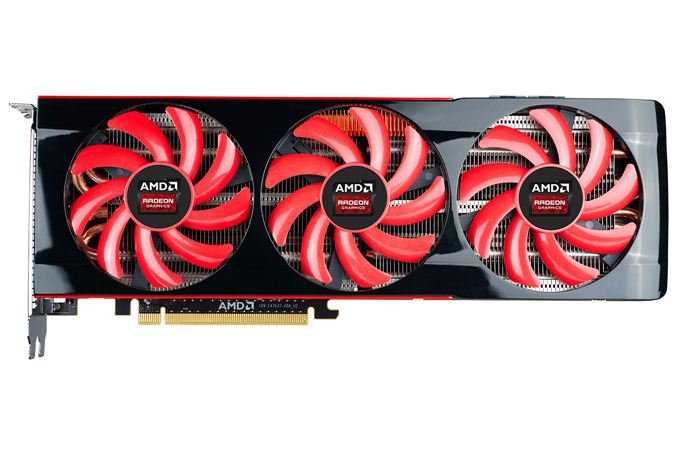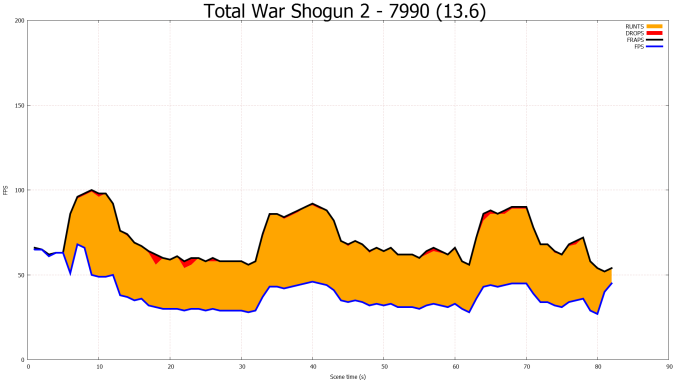AMD Frame Pacing Explored: Catalyst 13.8 Brings Consistency to Crossfire
by Ryan Smith on August 1, 2013 2:00 PM EST
In an off year that hasn’t seen too many new product releases thus far, this has been anything but a dull time. For the better part of a year now the technology journalist community – spearheaded by The Tech Report’s Scott Wasson – has been investigating the matter of frame pacing and frame timing on GPUs. In applying new techniques and new levels of rigor, Scott found that frames were not being rendered as consistently as we had always assumed they were, and that cards that were equal in performance as measured by frame rates were not necessarily equal in in performance as measured by frame intervals. It was AMD in particular who was battered by all of this work, with the discovery that both their single-GPU and multi-GPU products were experiencing poor frame pacing at times. AMD could meet (and beat) NVIDIA on frame rates, only to lose out on smoothness as a result of poor frame pacing.
Since then we have seen both some progress and some new revelations on these matters. AMD was very quick to start working on resolving their single-GPU issues, and by March when they were willing and able to fully engage the tech community, they had already solved the bulk of those single-GPU issues. With those issues behind them, they also laid out a plan to tackle the more complex issue of multi-GPU frame pacing, which would involve spending a few months to write a new frame pacing mechanism for their cards.
At the same time NVIDIA also dropped a small bombshell with the public release of FCAT, their long in development frame interval benchmarking tool. FCAT could do what FRAPS alone could not, capturing and analyzing the very output of video cards to determine frame rates, frame times, and frame intervals. Though FRAPS was generally sufficient to find and diagnose single-GPU issues, FCAT shed new light onto AMD’s multi-GPU issues, painting a far more accurate – and unfortunately for AMD more dire picture of Crossfire frame pacing.
Perhaps as proof that there’s no such thing as coincidence, since then we have seen the release of AMD’s latest multi-GPU monster, the Radeon HD 7990. Packing a pair of high clocked Tahiti GPUs, the 7990 was AMD’s traditional entry into the realm of $1000 multi-GPU super cards. A capable card on paper, the 7990 has been at the mercy of AMD’s drivers and lack of a frame pacing mechanism, with the previous revelations and FCAT results causing the 7990 to suffer what can only be described as a rough launch.
Ultimately when AMD engaged the community back in March they had a clear plan for addressing their multi-GPU frame pacing issues, developing a new frame pacing mechanism for their cards. AMD stated outright that this work would take a few months, something of an arduous wait for existing Crossfire users, setting a goal that the new frame pacing mechanism would “come in or around a July driver drop.” July has since come and gone by a day, but at long last AMD has completed their initial work on their new frame pacing mechanism and is releasing the first public driver today at 2pm ET as Catalyst 13.8 Beta 1.
As part of today’s launch activities, AMD seeded the beta driver to the press a week in advance to give us a chance to put it through the necessary paces, give AMD feedback, and write up about our experiences with the new driver. Over the next several pages we’ll be going over what changes AMD has made to their drivers, how they impact the 6 games we do frame interval testing with, and ultimately whether AMD has made sufficient progress in resolving their frame pacing issues. Make no mistake: AMD wants to get past these frame pacing issues as quickly as possible and remove the cloud of doubt that has surrounded the 7990 since its launch, making this driver launch an extremely important event for the company.











102 Comments
View All Comments
chizow - Wednesday, August 7, 2013 - link
There was discussions of microstutter on various forums associated with multi-GPU, but PCGH was the first site to publish it's findings in detail with both video evidence and hard data. From what I remember, they were the first to develop the methodology of using FRAPs frametimes and graphing the subsequent results to illustrate microstutter.BrightCandle - Friday, August 2, 2013 - link
One of the most shocking revelations to me is that AMDs quality assurance did not include checking the output of their cards frame by frame. I had always assumed that both NVidia and AMD had HDMI/DVI/VGA recorders that allowed them to capture the output of their cards so they could check them pixel by pixel, frame by frame and presumably check they were correct automatically.Such a technology would clearly have shown the problem immediately. I am stunned that these companies don't do that. Even FCAT is a blatantly blunt tool as it doesn't say anything about the contents of the frames. We still don't have any way to measure end to end latency for comparison either. All in all there is much to left to do and I am not confident that either company is testing these products well, its just I couldn't believe that AMD wasn't testing theirs for consistency (it was obvious when you played it something was wrong) at all.
krutou - Friday, August 2, 2013 - link
AMD is in the business of being the best performance per price entry in every market segment. Technology and quality come second.How often does AMD introduce and/or develop technologies for their graphics cards? The only two that come to mind are Eyefinity and TressFX (100 times more overhyped than PhysX).
Death666Angel - Saturday, August 3, 2013 - link
I think ATI had tessellation in their old DX8 chips. nVidia bought PhysX, so that shouldn't count. But I don't really see how having exclusive technology usable by a single GPU vendor is anything good. We need standardization and everybody having access to the same technologies (albeit with different performance deltas). Look at the gimmicky state of PhysX and imagine what it could be if nVidia would allow it to be fully utilized by CPUs and AMD GPUs?krutou - Saturday, August 3, 2013 - link
Because OpenCl and TressFX are doing so well right?bigboxes - Sunday, August 4, 2013 - link
March on, fanboi.JamesWoods - Sunday, August 4, 2013 - link
If you think that is all AMD/ATI has ever done for graphics then you sir, are ignorant. I was going to use a more degrading word there and thought better of it.Will Robinson - Friday, August 2, 2013 - link
LOL...what a load of tosh."NVDA had to take them by the hand"?
You and Wreckage ought to post in green text.
chizow - Friday, August 2, 2013 - link
Agree with pretty much of all of this, although I would direct a lot of the blame on AMD's most loyal, enthusiastic supporters as well. Every time microstutter was mentioned and identified as being worst with AMD solutions, AMD's biggest fans would get hyperdefensive about it. If those most likely to have a problem were too busy denying any problem existed, it really should be no surprise it was never fixed.And this is the result. Years of denial and broken CF, finally fixed as a result of the scrutiny from the press and laughter of Nvidia fans which brought this to a head and forced AMD to take a closer look and formulate a solution.
EJS1980 - Friday, August 2, 2013 - link
"Truth favors not one side."